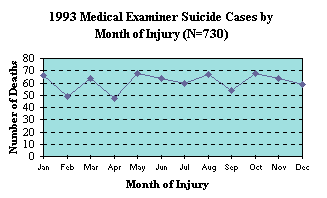
N.C. OCME Annual Report 1993
Back to Annual Report Index | Chapter 6
Chapter 5: Suicides
Suicide, the intentional taking of one's own life, is a serious public health problem in North Carolina. Figure 12 shows that a firearm was the means employed in 71 percent of suicides.
Suicides by sex and by means are shown in Figures 13 and 14. Males were more likely to use firearms compared to females (86 percent vs. 46 percent) while females were more likely to use drugs or poisons compared to males (32 percent vs. 5 percent).
Figure
12
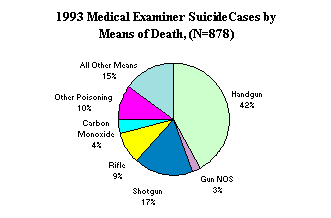
Figure
13

Figure
14
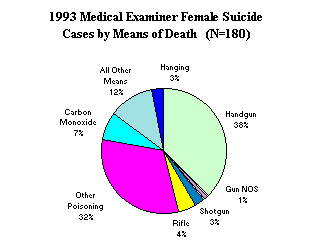
Suicide rates by race-sex group are shown in Table 8 while suicide rates by age group are shown in Figure 15. The suicide rate for white males was more than double that of any other race-sex group and the suicide rate for males in general was more than four times the rate for females. Persons age 65 and over had the highest suicide rate.
Table 8: 1993 Medical Examiner Suicide Death Rates by Race and Sex (per 100,000 population)
| White | Nonwhite | Total | |
|---|---|---|---|
| Male | 23.8 | 10.7 | 20.7 |
| Female | 6.0 | 2.0 | 5.0 |
| Total | 14.7 | 6.1 | 12.6 |
Figure
15
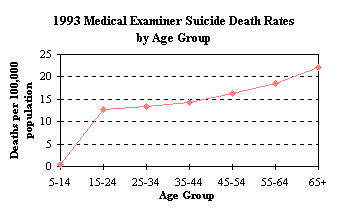
Figure 16 shows that the majority of suicides occurred during the daytime hours (7 a.m.-6 p.m.) in contrast to homicides where the majority occurred during the nighttime hours (7 p.m.-6 a.m.). Suicides by day of injury showed no apparent pattern. Contrary to popular wisdom, holiday periods are not the most likely time for suicides. Typically, spring is the peak period; however, 1993 saw its highest rates between May and August (Figure 17). It should be noted that a third of the suicide victims had an unknown hour of injury.
Figure
16
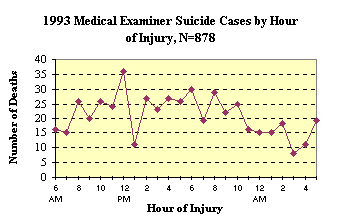
Figure
17
